Art/iculation magazine was produced on land that is the unceded territory of the Kanien’kehá:ka Nation of the Haudenosaunee Confederacy. The editorial staff recognizes that it is not enough to acknowledge the keepers of this land, and encourages readers to critically interrogate colonial histories and their present-day implications.
Bienvenue/welcome to the inaugural issue of Art/iculation, an inclusive celebration of Montreal and our heartfelt contribution to local 375th anniversary festivities. This publication aims to augment the illumination provided by $40 million of temporary decorative lighting on the Jacques Cartier Bridge by shining a humane and celebratory light on all local residents, especially those who are too often ignored. After all, it’s the people, not the construction projects and accompanying orange cones, who bring colour and life to the great métropole of Montreal.
Thus it’s hardly surprising that the scant regard for diversity in municipal anniversary programming has sparked controversy. In many ways – from an early advert purporting to celebrate the city’s “inclusivity” and multiculturalism that failed to feature a single person of colour, to the refusal to fund proposed projects that recognize Montreal’s Black community in Little Burgundy and the exclusion of Indigenous voices from the planning committee – events that should embrace many have been framed too narrowly.1 “We are all Montrealers who make this city move every day; but I expect many of us will not find ourselves included,” said Michael Farkas, who has organized the Little Burgundy Festival for over a decade.2
Such oversights reflect an all-too-familiar tendency to limit who is seen, and whose stories get told. “I think people don’t know there are 26,000 urban Aboriginal Montrealers. We are here, and we are multi-talented; and yet, people don’t recognize us,” said Nakuset, co-chair of the Montreal Urban Aboriginal Community Strategy Network.3 Though one-in-three Montrealers belongs to a visible minority, too few city-sponsored anniversary events recognize obscured narratives.4 Even fewer direct a critical gaze toward contemporary oppression, or stories of resistance and resilience.
Such oversights reflect an all-too-familiar tendency to limit who is seen, and whose stories get told.
In response, Art/iculation shares critical, artful inquiry on a wide range of topics relating to this issue’s theme: “While No One Was Looking.” The editorial staff hopes to banish the mythology that “nobody sees,” and instead highlight subjects that deserve greater attention.5 Artists and graduate students from all four local universities have submitted scholarly and creative works that explore what it means to “see” and “be seen,” including efforts to claim a share of the spotlight for Montreal’s 375th anniversary.
Unceded Voices discusses the significance of the artist collective for local Indigenous women in their efforts to build community and resist modern forms of colonialism. Ayanna Dozier relates her experience in a Montreal movie theatre to the colonial melancholy that impacts how people of colour move through public spaces. Joana Joachim’s interview with McGill University art historian Dr. Charmaine A. Nelson highlights the lasting impact of colonial histories on BIPOC. My article commemorates the powerful critique of colonialism in the poetry of Leon-Gontran Damas. His first published collection, Pigments, marks its 80th anniversary this year.
Our feature story by Sandra Evoughlian, Joanna Joachim, and Victoria Lessard, introduces the While No One Was Looking exhibition, and its participating artists. The artists speak through the piece, asserting their distinct notions of community and belonging.
The next section looks at urban surroundings and the impact of cultural heritage on Montrealers. Mira Baba relates her findings about a city-sponsored mobile application, and its linked large-scale projections of the city’s past on the walls of Old Montreal. In her interview with Dr. Clarence Epstein, Senior Director of Urban and Cultural Affairs at Concordia University, Lindsay Corbett delves into the influence of cultural heritage on how we experience the city. Jonathan Fraser Rouleau reflects on little-known local buildings in his photo essay.
The final section touches on forms of resistance. Itzel Danae Maldonaldo highlights use of feminist memes to combat sexual violence in South America, while Kyrstin Felts discusses social media responses to several sexual assaults at McGill University. Kirsten Gerrie proposes ways to assist to the growing number of Indigenous students seeking higher education in Canada. And Boris Romero describes the resilience of Wayúu Indigenous culture in Colombia and Venezuela.
In addition to these written works, still frames from an animated gif by local artist, La Reine, call attention to local urban spaces deemed “unsafe” for women and the ways in which being “unseen is then to be safe”.6 The collage by Montreal-based artist, Christina Marie Phelps, uses “a torn up and deconstructed map of the city, to reference the destructive nature of colonization on both Indigenous peoples and their land.”7
The magazine takes its name from “The theory and method of articulation in cultural studies” by Jennifer Daryl Slack, who argues “articulation can be understood as a way of characterizing a social formation without falling into the twin traps of reductionism and essentialism”.8 This captures the spirit of Art/iculation, which aims to make space for nuanced works that share marginalized perspectives.
We suggest an important principle to guide your enjoyment of this issue: As members of a free and enlightened society, don’t forget to look at everything with a critical eye!
Happy reading,
Sofia Misenheimer
Editor-in-chief
- “Organizer apologizes after ad for Montreal’s 375th features only white people,” CBC News, 22 Nov 2016, http://www.cbc.ca/news/canada/montreal/montreal-375th-anniversary-ad-commercial-white-diversity-1.3861843.
- Catherine Solyom, “No Jones, No Peterson, No Jazz in 375th celebrations,” Montreal Gazette, 12 July 2016, http://montrealgazette.com/news/no-jones-no-peterson-no-jazz-in-375th-celebrations.
- “Organizer apologizes.”
- Marc Cassivi, “375 ans, une couleur,” LaPresse, http://plus.lapresse.ca/screens/40f99f8a-cdc3-4948-887a-3fd6b94f7a72%7C_0.html.
- “What blows me away…” Twitter, 24 March 2017, https://mobile.twitter.com/dopegirlfresh/status/845305339897679872.
- Artist statement.
- Artist statement.
- Jennifer Daryl Slack, “The theory and method of articulation in cultural studies,” Stuart Hall: Critical Dialogues in Cultural Studies, (London: Routledge, 1996), 112.



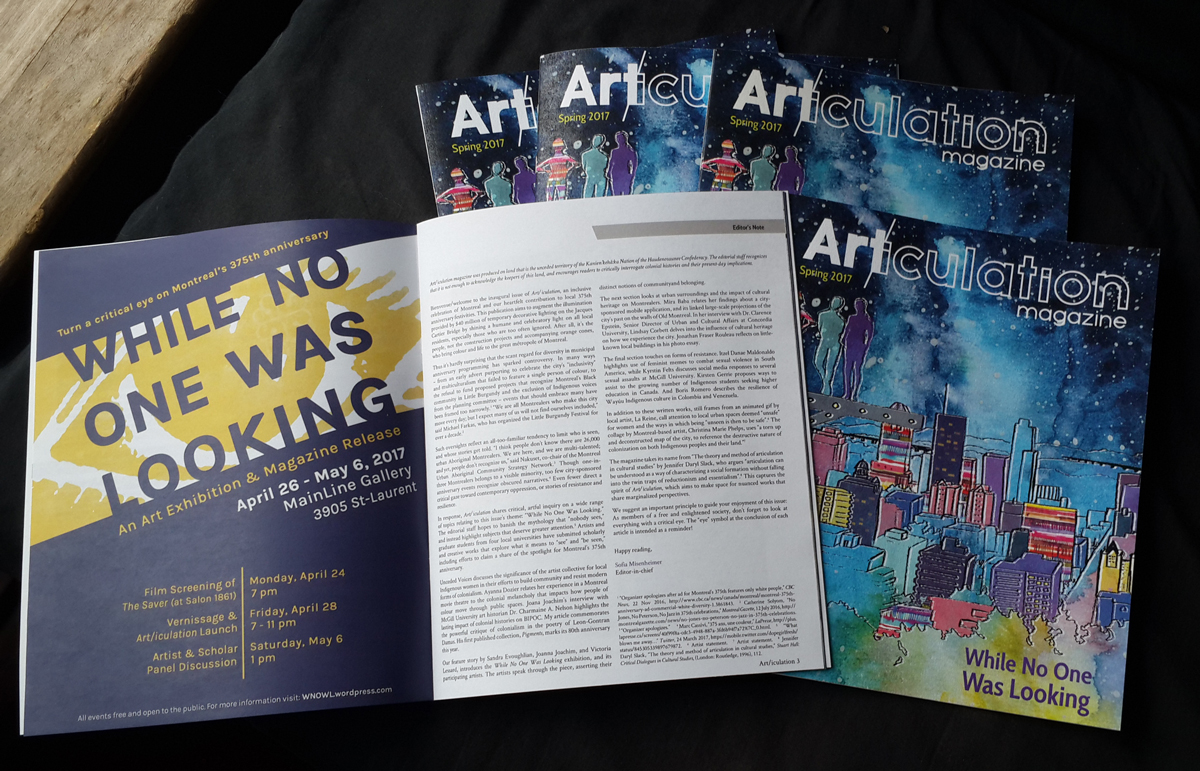

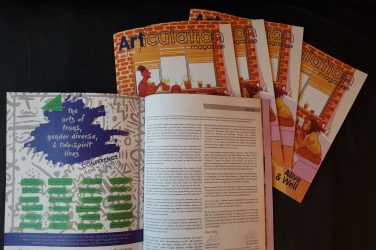
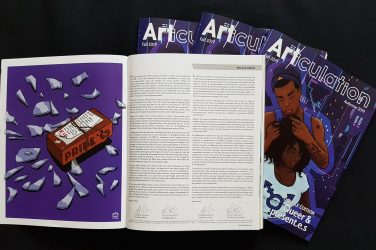
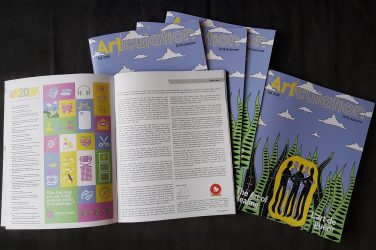
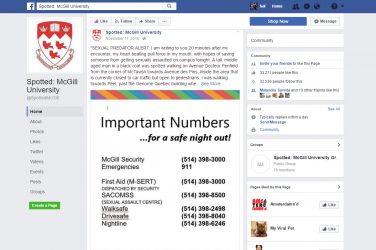
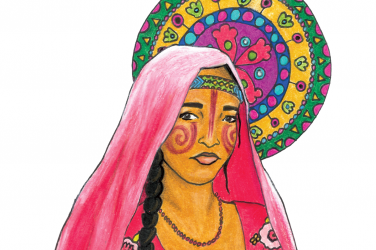
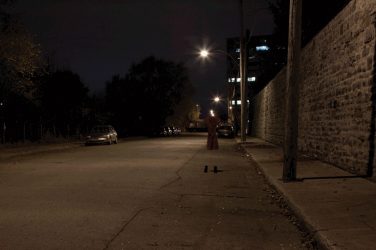
Show Comments (0)